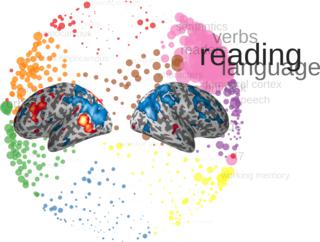PLOS ONE ( IF 3.7 ) Pub Date : 2018-09-20 , DOI: 10.1371/journal.pone.0204338 Martin Wegrzyn , Joana Aust , Larissa Barnstorf , Magdalena Gippert , Mareike Harms , Antonia Hautum , Shanna Heidel , Friederike Herold , Sarah M. Hommel , Anna-Katharina Knigge , Dominik Neu , Diana Peters , Marius Schaefer , Julia Schneider , Ria Vormbrock , Sabrina M. Zimmer , Friedrich G. Woermann , Kirsten Labudda

|
Cognitive processes, such as the generation of language, can be mapped onto the brain using fMRI. These maps can in turn be used for decoding the respective processes from the brain activation patterns. Given individual variations in brain anatomy and organization, analyzes on the level of the single person are important to improve our understanding of how cognitive processes correspond to patterns of brain activity. They also allow to advance clinical applications of fMRI, because in the clinical setting making diagnoses for single cases is imperative. In the present study, we used mental imagery tasks to investigate language production, motor functions, visuo-spatial memory, face processing, and resting-state activity in a single person. Analysis methods were based on similarity metrics, including correlations between training and test data, as well as correlations with maps from the NeuroSynth meta-analysis. The goal was to make accurate predictions regarding the cognitive domain (e.g. language) and the specific content (e.g. animal names) of single 30-second blocks. Four teams used the dataset, each blinded regarding the true labels of the test data. Results showed that the similarity metrics allowed to reach the highest degrees of accuracy when predicting the cognitive domain of a block. Overall, 23 of the 25 test blocks could be correctly predicted by three of the four teams. Excluding the unspecific rest condition, up to 10 out of 20 blocks could be successfully decoded regarding their specific content. The study shows how the information contained in a single fMRI session and in each of its single blocks can allow to draw inferences about the cognitive processes an individual engaged in. Simple methods like correlations between blocks of fMRI data can serve as highly reliable approaches for cognitive decoding. We discuss the implications of our results in the context of clinical fMRI applications, with a focus on how decoding can support functional localization.
中文翻译:

思维实验:从一个人的功能磁共振成像数据解码认知过程
可以使用fMRI将认知过程(例如语言生成)映射到大脑。这些映射又可以用于从大脑激活模式解码相应的过程。给定大脑解剖结构和组织的个体差异,对单身人士的水平进行分析对于增进我们对认知过程如何与大脑活动模式相对应的理解非常重要。它们还可以促进fMRI的临床应用,因为在临床环境中必须对单个病例进行诊断。在本研究中,我们使用心理成像任务来调查单个人的语言产生,运动功能,视觉空间记忆,面部处理和静止状态活动。分析方法基于相似性指标,包括训练数据与测试数据之间的相关性,以及与NeuroSynth荟萃分析中的图的相关性。目的是对单个30秒块的认知域(例如语言)和特定内容(例如动物名称)做出准确的预测。四个团队使用了数据集,每个团队都对测试数据的真实标签视而不见。结果表明,在预测块的认知域时,相似性度量可以达到最高的准确度。总体而言,四支团队中的三支可以正确预测25个测试块中的23个。排除非特定的静止条件,就其特定内容而言,最多可以成功解码20个块中的10个。这项研究表明,单个功能磁共振成像会话及其每个单个块中包含的信息如何能够推断出一个人参与的认知过程。简单的方法(如功能磁共振成像数据块之间的相关性)可以用作高度可靠的认知方法。解码。我们在临床功能磁共振成像应用的背景下讨论了结果的含义,重点是解码如何支持功能定位。



























 京公网安备 11010802027423号
京公网安备 11010802027423号